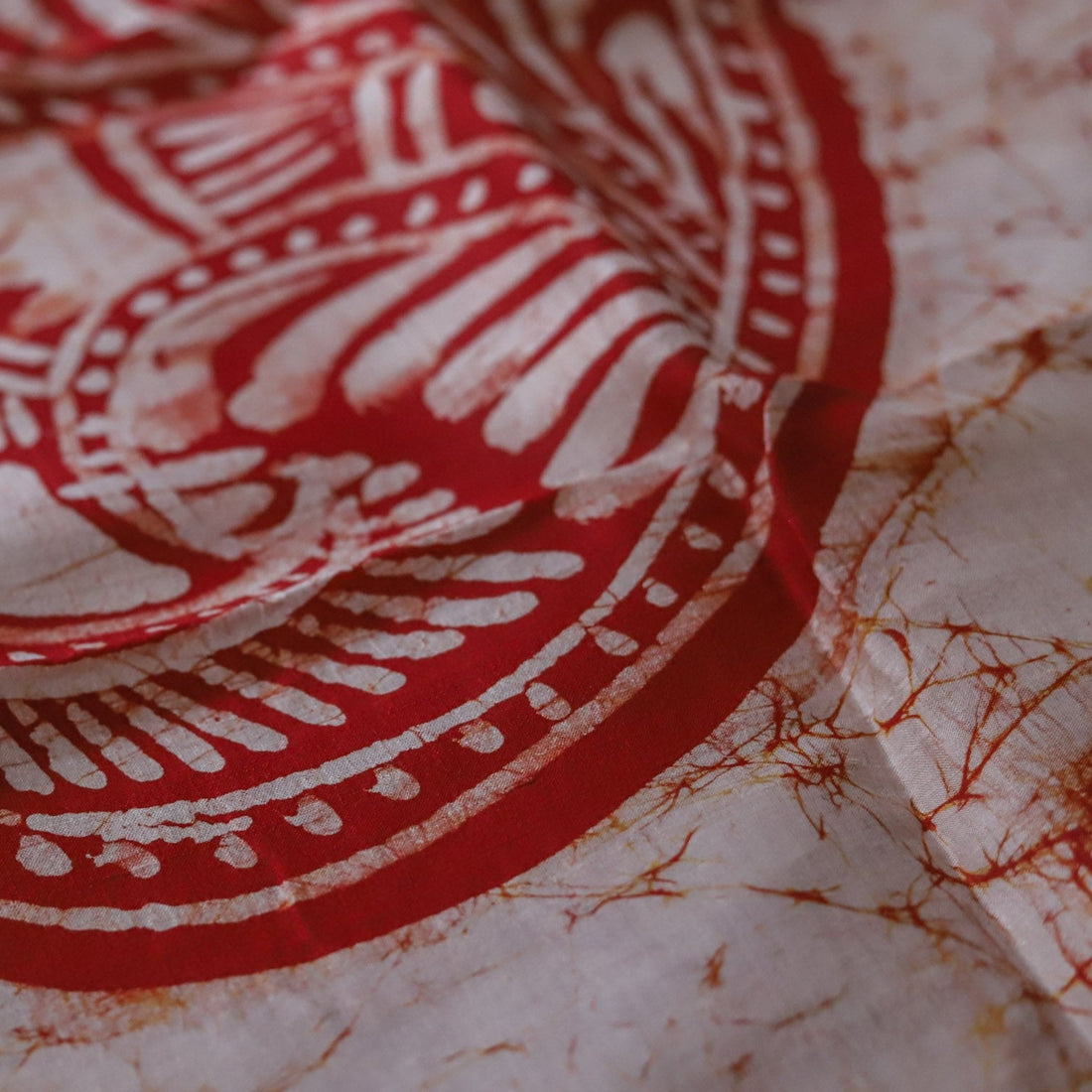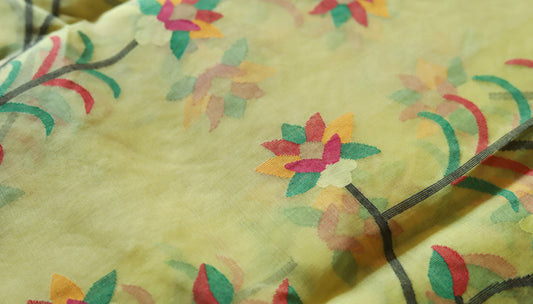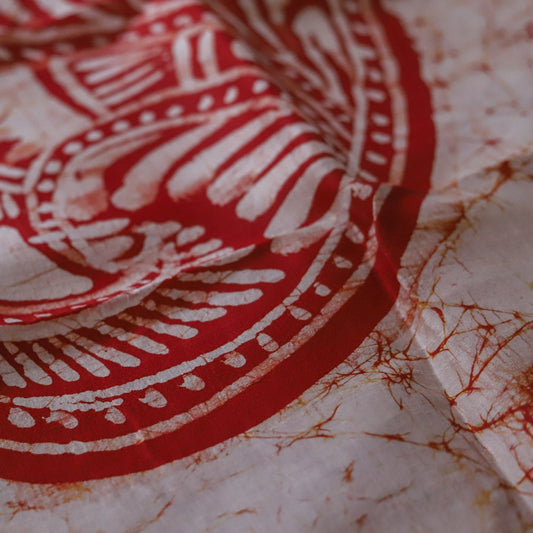
Batik (Handmade Craft)
Batik is an intricate and traditional textile art form practiced in West Bengal and many other parts of the world. It involves a meticulous process of decorating fabric using a combination of hot wax and colourful dyes. The creation of batik is broadly a three stage process of waxing, dyeing and de-waxing (removing the wax). There are also several sub-processes like preparing the cloth, tracing the designs, stretching the cloth on the frame, waxing the area of the cloth that does not need dyeing, preparing the dye, dipping the cloth in dye, boiling the cloth to remove wax and washing the cloth in soap.
The word batik actually means 'wax writing' and that is basically what batik is all about. It is a way of decorating cloth by covering a part of it with a coat of wax and then dyeing the cloth. The waxed areas keeps its original colour and when the wax is removed the contrast between the dyed and undyed areas makes the pattern.
The handmade Batik process in Bengal is a meticulous and labour intensive craft that involves several intricate steps as following:
1. Selection of Fabric:
- The process begins with the selection of high-quality natural fabrics such as cotton or silk. The fabric is washed and prepared to ensure it's clean and ready for the Batik process.
2. Design:
- Artisans typically create the Batik design on paper first. They draw the desired patterns and motifs, often inspired by nature, folklore, or cultural heritage.
- These designs are then traced onto the fabric using a pencil or chalk, creating the outline for the Batik work.
3. Waxing:
- Using a canting tool (a small copper container with a spout) or a brush, artisans apply hot melted wax onto the fabric following the traced design lines.
- The wax acts as a resist, preventing the penetration of dyes into the waxed areas and preserving the original colour of the fabric.
- Artisans carefully control the flow of wax, ensuring precise and intricate patterns.
4. Dyeing:
- The waxed fabric is then submerged into dye baths. Different dye baths are used to achieve various colours and shades.
- Artisans must be skilled in timing and dipping techniques to ensure the desired colours are absorbed by the fabric.
- The dyeing process may involve multiple rounds to create the desired colour palette.
5. Setting the Dye:
- After dyeing, the fabric is laid out in the sun to dry. The sunlight helps set the colours and gives the fabric a vibrant appearance.
- The Batik fabric can also be dried using other methods such as heat or air-drying.
6. De-waxing:
- Once the fabric is thoroughly dried, it undergoes a crucial step where the wax is removed.
- The Batik fabric is boiled or washed in hot water to melt and remove the wax. The wax is separated, and the fabric is left with the colourful Batik patterns.
7. Finishing Touches:
- After the wax removal, the Batik fabric may go through additional processes such as washing and ironing to enhance its texture and appearance.
- The fabric is then ready to be transformed into various products like clothing, scarves, home decor items, or artwork.



